Disclosure: This article contains affiliate links. We may earn a commission from purchases at no extra cost to you, which helps our travel content.
The rhythm of Shanghai hits you in waves – first the visual symphony of neon against ancient architecture, then the percussion of street vendors calling out their specialties, and finally, the melody of aromas that pull you through narrow lanes toward culinary revelations. My marathon training has always been fueled by street food discoveries, and nowhere has challenged my taste buds quite like Shanghai. Last fall, I found myself in this metropolis for the Shanghai International Marathon, but what began as a weeklong pre-race carb-loading mission evolved into a spiritual journey through the city's rapidly evolving street food landscape. Between early morning temple visits and late-night vinyl hunts, I discovered that Shanghai's true pulse isn't found in its towering skyscrapers but in its steaming bamboo baskets and sizzling woks, where tradition and innovation dance in perfect harmony.
Finding Your Street Food Rhythm: Navigating Shanghai's Culinary Landscape
Let me tell you something I've learned from both marathon running and street food hunting – it's all about finding your rhythm. Shanghai's food scene operates on its own distinctive tempo, with breakfast stalls appearing at dawn, lunch vendors claiming their spots by midday, and night markets transforming quiet streets into bustling food bazaars after sunset.
My first morning in Shanghai, I laced up my running shoes and hit the streets at 6 AM, following local seniors to their favorite breakfast spots. This early reconnaissance mission led me to a tiny stall near Jing'an Temple where an elderly couple had been making jianbing (savory crepes) for over 30 years. The husband spread batter in perfect circles while his wife added crispy wonton crackers, herbs, and their secret sauce with the precision of a watchmaker.
Navigating Shanghai's food streets requires both planning and spontaneity. I found that neighborhoods like the Former French Concession and Tianzifang offer concentrated pockets of street food with varying degrees of tourist adaptation, while areas like Qibao Old Street provide a more authentic experience. The key is to venture beyond the first row of vendors, who often cater to tourists, and seek out the stalls with lines of locals.
By my third day, I'd established a pattern: morning runs to scout locations, midday explorations of food streets, and evening visits to night markets. I tracked my discoveries in my travel journal, creating a personal food map that became my most valuable souvenir from Shanghai.

💡 Pro Tips
- Follow morning exercisers to find authentic breakfast spots
- Look for lines of locals, not just other tourists
- Learn basic food vocabulary in Mandarin (or save pictures on your phone)
The Xiaolongbao Pilgrimage: Beyond the Tourist Traps
Every runner knows that landmark feeling – when your body finds its flow state and everything clicks into place. I experienced that same sensation the moment I bit into my first properly-made xiaolongbao (soup dumpling) in Shanghai. These little pouches of culinary magic represent everything I love about street food: deceptive simplicity hiding technical mastery.
Skip the famous chains with their hour-long queues and inflated prices. My xiaolongbao epiphany happened at Fuchun Xiaolong in the Huangpu District, where I watched masters fold these delicate dumplings with 18 precise pleats. The technique for eating them properly is equally precise – nibble a small hole, slurp the soup, then consume the dumpling with a bit of ginger.
For those seeking the full spectrum of Shanghai dumpling experiences, create your own xiaolongbao crawl through these lesser-known spots:
- Fuchun Xiaolong: Tucked away on Yuyuan Road, this local institution serves dumplings with thinner skins and richer broth than the famous chains.
- Jia Jia Tang Bao: Near People's Square, this no-frills spot often sells out by early afternoon.
- Lin Long Fang: In the Former French Concession, their pork and crab xiaolongbao achieve perfect balance between meat and soup.
While xiaolongbao get all the international attention, don't miss their cousins – shengjianbao (pan-fried soup dumplings). After a 10K training run through People's Park one morning, I stumbled upon Yang's Fry Dumplings and watched in awe as cooks managed dozens of sizzling buns on massive cast-iron pans, flipping them with choreographed precision that reminded me of the flowing movements I'd witnessed at Shanghai's Jade Buddha Temple days earlier.
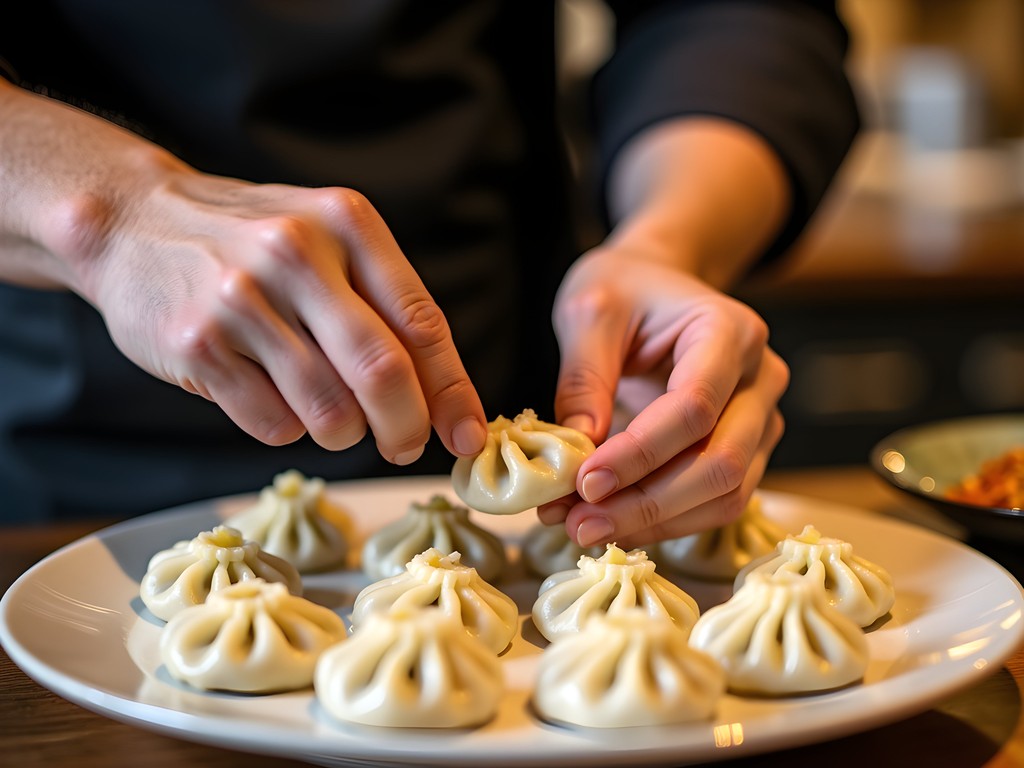
💡 Pro Tips
- Order xiaolongbao in batches to ensure they're always served piping hot
- Use the Chinese pronunciation ('shao-long-bao') rather than English for better service
- Look for places where you can see the dumplings being made fresh
Noodle Meditation: Finding Zen in Shanghai's Noodle Shops
My years of visiting monasteries across Asia have taught me that meditation comes in many forms. In Shanghai, I discovered noodle meditation – the transcendent state achieved while watching noodle masters stretch dough into impossibly thin strands through a hypnotic dance of pulls and twirls.
On my rest day before the marathon, I sought out Wei Xiang Zhai, a hole-in-the-wall serving what might be Shanghai's most perfect bowl of scallion oil noodles (cong you ban mian). The simplicity is deceiving – just noodles, scallion oil, soy sauce, and spring onions – but the execution requires monastic discipline. The noodles must have the perfect chew, the oil needs to be infused at the right temperature, and the balance must be harmonious.
For something heartier, venture to Henan Lamian near the Bund for hand-pulled beef noodle soup. Here, the noodle master performs his art in front of customers, transforming a lump of dough into strands of varying thickness based on your preference. I watched for nearly an hour, completely losing track of time – the same feeling I get during long runs when my mind clears and I find that perfect rhythm.
My most unexpected noodle discovery came during a light rain shower when I ducked into an unmarked shop on Wulumuqi Road. The elderly owner served only one dish – you mian (oil noodles) – using a recipe unchanged for decades. When I asked about his technique through my rudimentary Mandarin and generous hand gestures, he simply smiled and said what roughly translated to "same hands, same heart, same noodles" – a philosophy that resonated deeply with my own approach to marathon training.
Bring your reusable chopsticks to these small establishments. Not only is it more sustainable, but the gesture often earns appreciative nods from the owners who recognize you as a respectful traveler rather than a casual tourist.
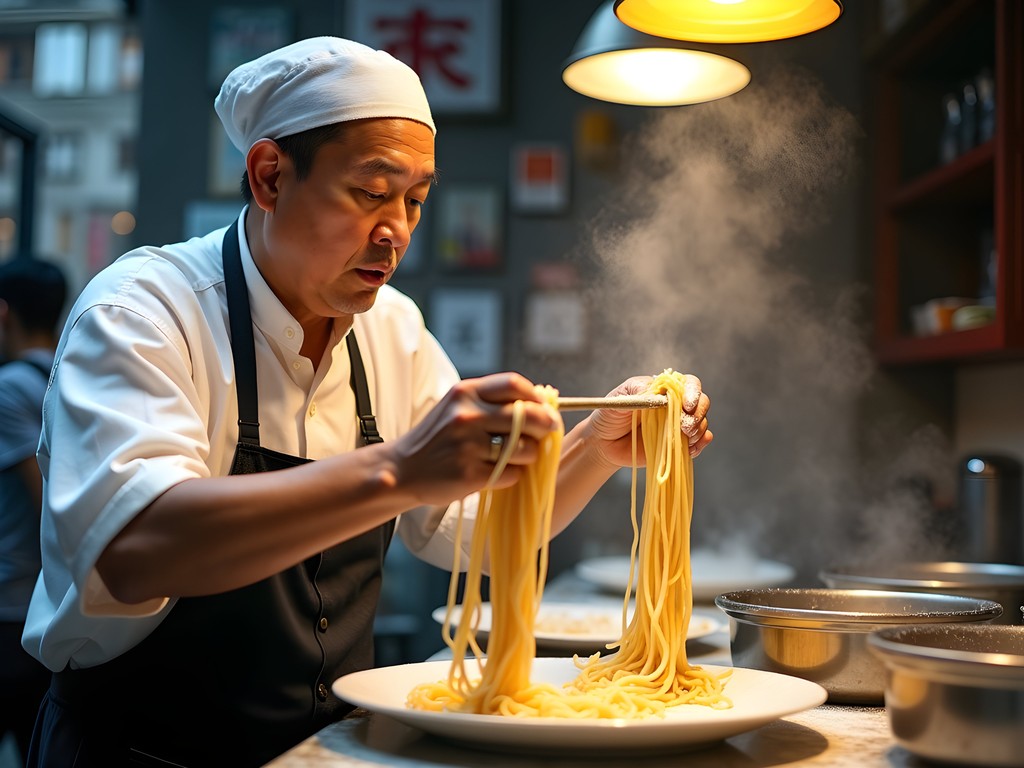
💡 Pro Tips
- Visit noodle shops during off-peak hours (2-5 PM) to watch the masters work without rushing
- Order half portions if you want to try multiple styles in one day
- Learn the phrase 'wo yao yi wan' (I want one bowl) and the name of your desired noodle type
Night Market Marathons: From Qibao to The Bund
My favorite way to recover after long training runs has always been to walk – slowly, mindfully – through markets and malls, absorbing the culture through its commerce. Shanghai's night markets offered the perfect combination of gentle movement and sensory feast for my post-run evenings.
Qibao Ancient Town transforms after sunset when lanterns illuminate its canal-side streets and food vendors create a gastronomic wonderland. Here, I discovered chou doufu (stinky tofu) – a dish that challenges Western noses but rewards adventurous palates with complex flavors that remind me of aged blue cheese. The vendor laughed at my reaction to the smell but nodded approvingly when I came back for seconds.
For a more modern experience, the streets surrounding Tianzifang fill with temporary stalls selling everything from spiral-cut potatoes on sticks to grilled squid. This area attracts a younger crowd, and the fusion offerings reflect Shanghai's position at the crossroads of tradition and innovation. I found a vendor creating what he called 'pizza baozi' – steamed buns filled with tomato sauce and cheese – a bizarre but delicious East-West hybrid.
My most memorable night market experience came after getting lost near Yu Garden. Following the scent of grilling meat, I discovered a hidden courtyard where families gathered around small tables eating shaokao (Chinese barbecue skewers). Armed with my trusty phrase book, I pointed to what others were eating and soon found myself sharing a table with three generations of a Shanghai family who insisted I try their grandmother's homemade plum wine.
Street food in Shanghai isn't just about eating – it's about connecting. In a city of 26 million people, these intimate food moments create the same sense of community I've found in monastery kitchens and record shops around the world – spaces where strangers become temporary family united by shared appreciation for something authentic.
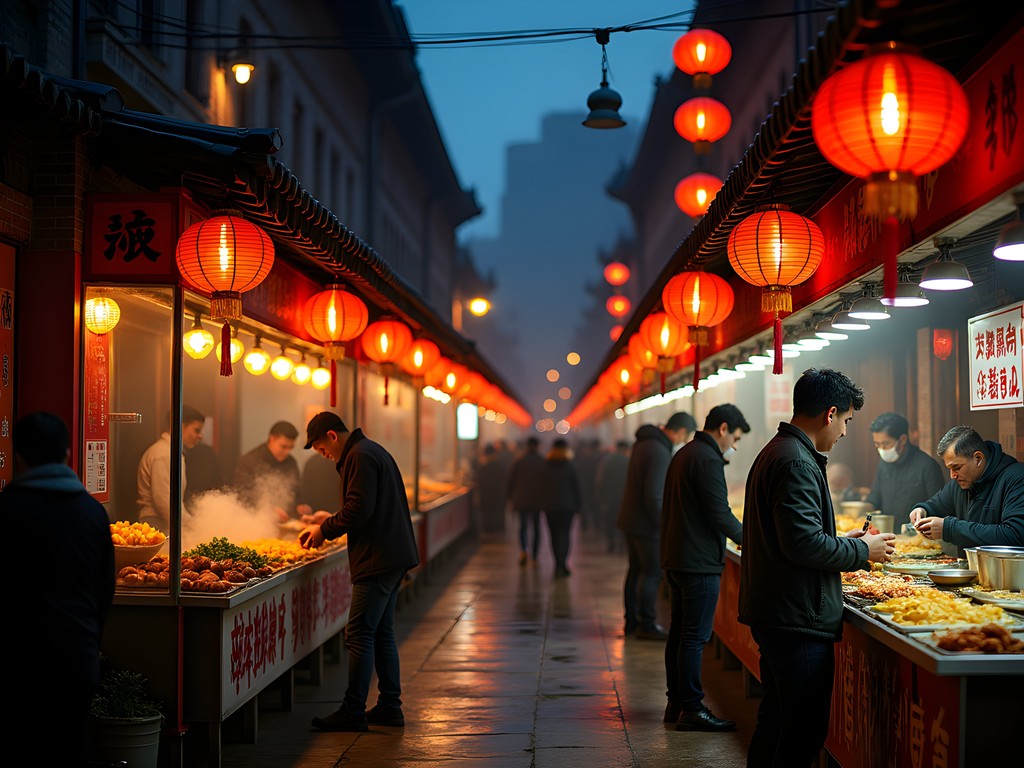
💡 Pro Tips
- Bring small bills and change for easier transactions
- Photograph or save pictures of dishes you want to try to overcome language barriers
- Follow your nose – the best stalls often have the strongest aromas
Morning Fuel: Breakfast Streets and Temple-Side Treasures
Marathon runners know that morning routines are sacred, and in Shanghai, the breakfast ritual is elevated to an art form. By 5:30 AM, the city's breakfast streets come alive with vendors preparing the fuel that powers Shanghai's workforce through their day.
My pre-run breakfast discovery routine became one of my favorite Shanghai experiences. Each morning, I'd head out in a different direction from my budget-friendly hostel near Jing'an Temple, following locals to their breakfast spots. The most magical moments often came from these dawn explorations – like finding an elderly man making da bing (large flatbreads) in a makeshift street oven that had been in his family for generations.
Fuxing Road became my go-to breakfast street, where I'd start with youtiao (fried dough sticks) dipped in fresh soy milk, followed by ci fan (sticky rice rolls) stuffed with crispy fried dough and preserved vegetables. The vendors recognized me by my third visit, and one woman insisted on adding extra filling to my rice roll "for running energy."
For a more contemplative breakfast experience, I discovered a small vegetarian stall outside Jade Buddha Temple that served zhou (rice porridge) with an array of pickled vegetables and fresh herbs. The monk who ran it explained that they used the same recipe that had been feeding temple visitors for centuries. I sat on a small plastic stool, watching the temple come alive with morning prayers while savoring the simple, nourishing porridge – a perfect pre-run meditation.
These morning food explorations connected me to Shanghai's rhythm in ways that tourist attractions never could. I'd record voice notes about my discoveries on my wireless earbuds while walking, capturing the sounds of the awakening city alongside my observations – creating an auditory food map I still revisit when I'm craving Shanghai's flavors back home in Toronto.
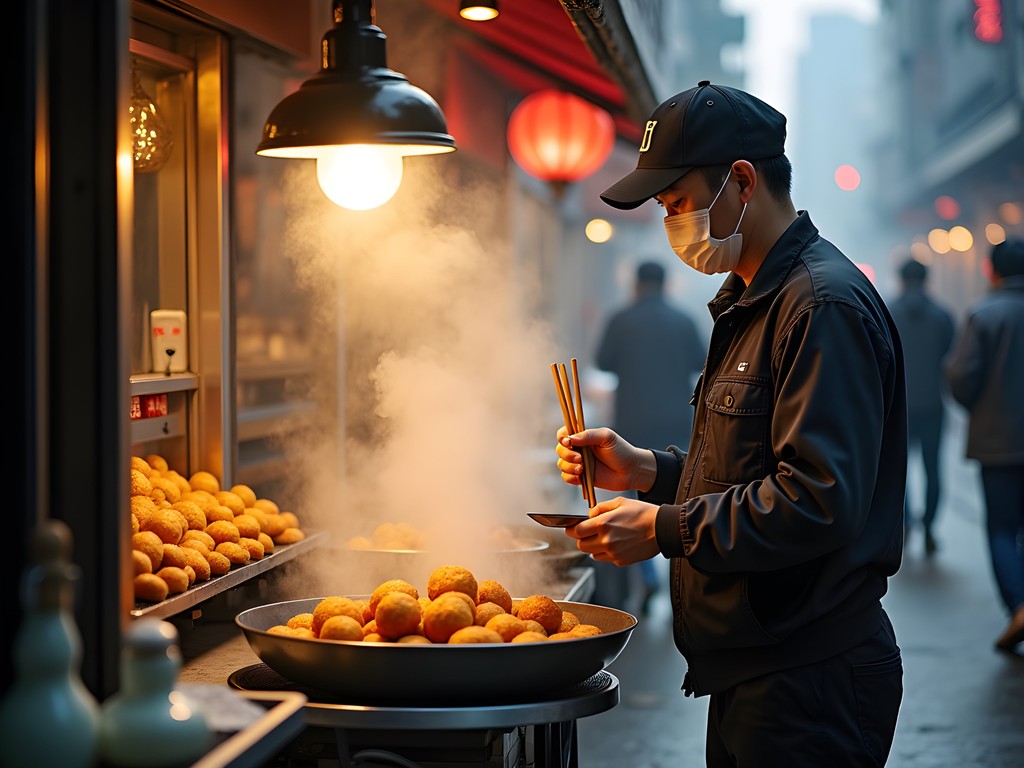
💡 Pro Tips
- Arrive early (before 7 AM) for the freshest offerings and to see the full preparation process
- Bring your own container for takeaway to reduce waste
- Try different variations of the same dish across multiple vendors to appreciate regional differences
Final Thoughts
As I crossed the Shanghai Marathon finish line, I realized that my week of street food exploration had prepared me for the race in unexpected ways. Like the city itself, the marathon route wove together old and new Shanghai, tradition and innovation, struggle and triumph. The vendors who rise before dawn to fold dumplings with practiced precision, the noodle masters who transform simple dough into art through repetitive motion, and the night market cooks who keep ancient recipes alive – they're all running their own kind of marathon every day.
Shanghai's street food scene isn't just about satisfying hunger; it's about connecting with a city's soul through its most democratic spaces. In a place changing as rapidly as Shanghai, these humble food stalls serve as anchors to tradition while simultaneously embracing evolution. So lace up your shoes, bring your appetite, and find your own culinary rhythm in Shanghai's streets. The best discoveries, as in marathon running, often come when you venture beyond the marked path and trust your instincts.
✨ Key Takeaways
- Follow locals to find authentic food spots rather than relying solely on tourist recommendations
- Visit the same vendors multiple times to build relationships and get the 'regular' treatment
- Balance iconic dishes like xiaolongbao with lesser-known local specialties
- Street food exploration is best done in layers – morning, midday, and evening offer completely different experiences
📋 Practical Information
Best Time to Visit
Fall (September-November) for comfortable temperatures and harvest season ingredients
Budget Estimate
$30-50 USD per day for street food exploration
Recommended Duration
5-7 days
Difficulty Level
Intermediate


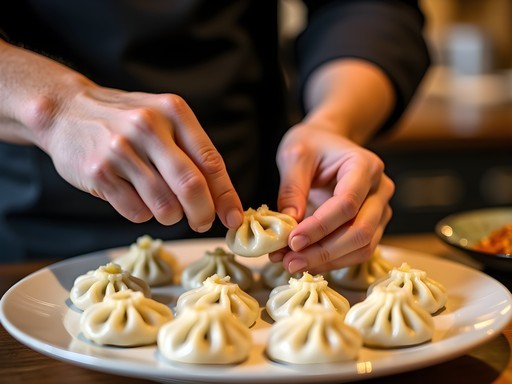
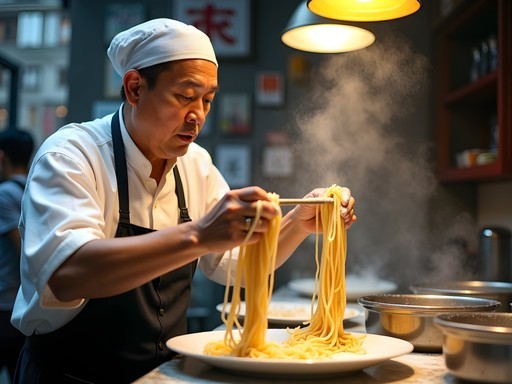
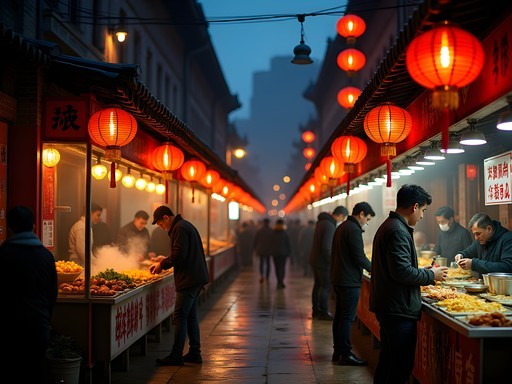
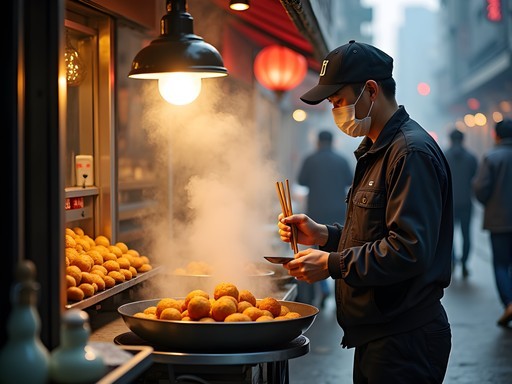



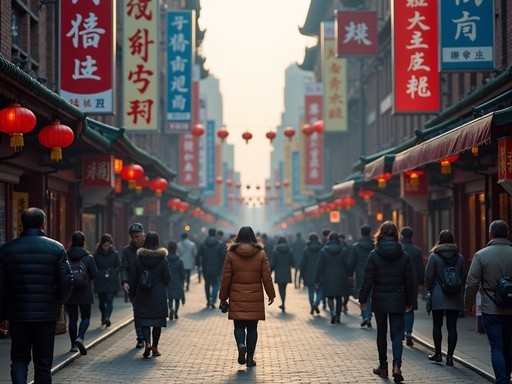





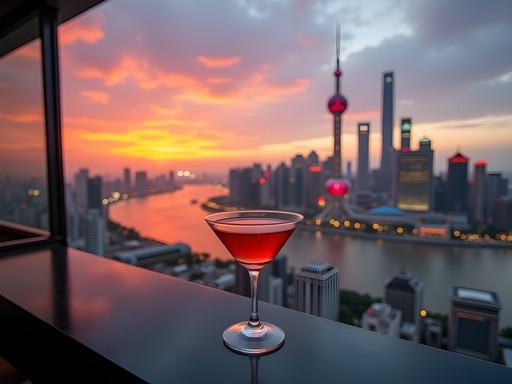
Comments
Kimberly Murphy
Brilliant post, Mason! Your section on 'Noodle Meditation' resonated with me deeply. For anyone following this guide, I'd add that the area around Tianzifang has some fantastic fusion street food that bridges traditional Shanghai flavors with modern techniques. My absolute favorite discovery was a tiny stall selling scallion pancakes filled with braised pork belly - it's down an alley off Taikang Road. The owner speaks a bit of English and loves explaining his cooking process. Also, if you're doing the street food marathon like Mason, consider breaking it up by neighborhood rather than trying to cross the city multiple times. Shanghai's huge, and you'll waste precious eating time in transit!
sunsetwalker
Those scallion pancakes sound incredible! Saving this comment for my trip planning!
springguide
Mason, you nailed the Qibao night market description! Been there 3 times and it never disappoints. For anyone planning to visit, I recommend going on weeknights rather than weekends to avoid the worst crowds. The crayfish stalls at the back are where locals hang out. Also, I found having a good translation app on my phone essential for deciphering some of the more obscure food stalls - especially those with regional specialties from outside Shanghai. The hand-pulled noodle demonstration stalls are the best entertainment while you wait for your food!
luckyperson
Going to Shanghai next month! How's the language barrier for ordering street food? Any phrases I should learn?
springguide
Most street vendors have picture menus, but learning 'zhè ge' (this one) while pointing works wonders! Also worth knowing 'tài là' (too spicy) if you can't handle heat.
luckyperson
Thanks! That's super helpful. I'll practice those phrases!
luckyway
Just got back from Shanghai last month and this post is spot on! The noodle shops near Jing'an Temple were my daily ritual. I'd add that taking the metro between food spots is super easy - I bought a 3-day pass and it was perfect for hopping between different neighborhoods for different meals. The contrast between traditional street vendors and those modern food halls is what makes Shanghai's food scene so special. Also, don't miss the shengjianbao (pan-fried dumplings) - different from xiaolongbao but equally life-changing!
sunsetwalker
Those xiaolongbao spots sound amazing! Definitely adding this to my bucket list!
Kimberly Murphy
Trust me, they're worth the trip alone! I still dream about the ones from that little place near Yuyuan Garden.
sunsetwalker
Any specific place you'd recommend for a first-timer?
Kimberly Murphy
Skip Din Tai Fung (good but touristy) and try Jia Jia Tang Bao. Just be prepared to queue!
waveperson
Love how you connected food exploration to marathon training! Food adventures are the best way to really see a city.
Marco Flores
Mason, this brought back so many memories! I spent three weeks in Shanghai last year documenting street food for my blog. That noodle shop you mentioned on Yunnan Road? Life-changing. I still dream about their scallion oil noodles. One tip for readers: the best xiaolongbao I found wasn't at the famous places, but at a tiny hole-in-the-wall on Jianguo West Road run by an elderly couple. No English menu, just point and smile. And definitely try the sheng jian bao (pan-fried soup dumplings) - crispier and more satisfying than xiaolongbao in my opinion! Did you make it to the morning wet markets? That's where you see the real culinary soul of Shanghai.
ShanghaiExplorer88
Marco - any chance you remember the cross street for that xiaolongbao place? Going next week and would love to find it!
Marco Flores
It's near the intersection with Xiangyang Road, across from a small park. Look for red lanterns and a constant line of locals. If you find it, try their crab xiaolongbao - incredible!
adventurequeen
This makes me so hungry! I'm visiting Shanghai next month - is street food generally safe for foreigners? Any spots I should definitely avoid?
Marco Flores
Hey! I was just in Shanghai last month. Most street food is totally fine - just look for busy stalls with locals. The xiaolongbao places Mason mentioned near Yu Garden were amazing. I'd just avoid anything that looks like it's been sitting out too long. And bring a small bottle of hand sanitizer!
adventurequeen
Thanks Marco! That's super helpful. Did you try those night markets? Worth it?
Marco Flores
Absolutely! Qibao was my favorite - less touristy than the ones near the Bund. Try to go around 8pm when it's lively but not too packed. The crayfish stands there are amazing if you're feeling adventurous! I used my pocket translator to chat with vendors - totally worth bringing something like that.
Bella Harper
Mason, your noodle meditation section resonated with me deeply! At 61, I've been traveling for cultural experiences for decades, and there's something spiritual about watching Shanghai's noodle masters at work. On my visit last year, I spent an entire morning at a tiny shop in Tianzifang watching the chef transform a lump of dough into hundreds of strands with just his hands. The rhythm, precision, and focus reminded me of artisans I've observed worldwide. My tip for fellow travelers: sit at counters whenever possible. The connection with food preparation is part of Shanghai's magic. Also, don't miss the scallion oil noodles - simple perfection that shows Shanghai's soul.
Mason Sullivan
Bella, you captured it perfectly! There's something meditative about watching those noodle masters work. And yes - scallion oil noodles are the unsung heroes of Shanghai cuisine!
explorevibes
Just got back from Shanghai and used this guide extensively - thank you! Quick tip for anyone going soon: the metro Line 10 takes you to most of these food spots, and I found getting a transportation card at the airport saved tons of hassle. Also, the breakfast jianbing stands are mostly gone by 9am, so get up early! The ones near People's Square were my favorite - that crispy wonton wrapper inside makes all the difference.
escapewanderer
Thanks for the metro tip! Did you need cash for most street vendors or do they take WeChat pay?
explorevibes
Most take WeChat Pay but it can be tricky to set up as a foreigner. I kept some small bills handy just in case. Even the tiniest stands had QR codes though!
Venture X
Premium card with 2X miles, $300 travel credit, Priority Pass